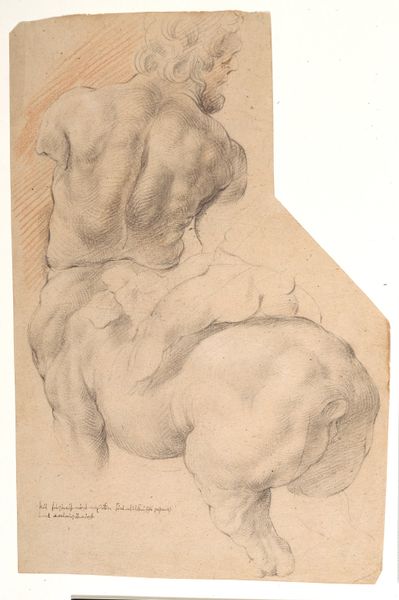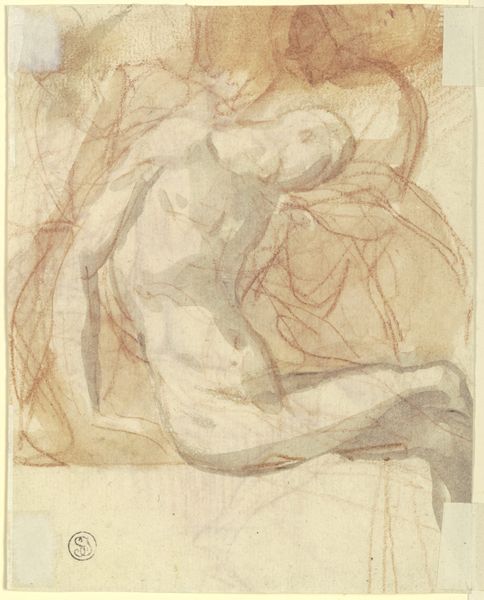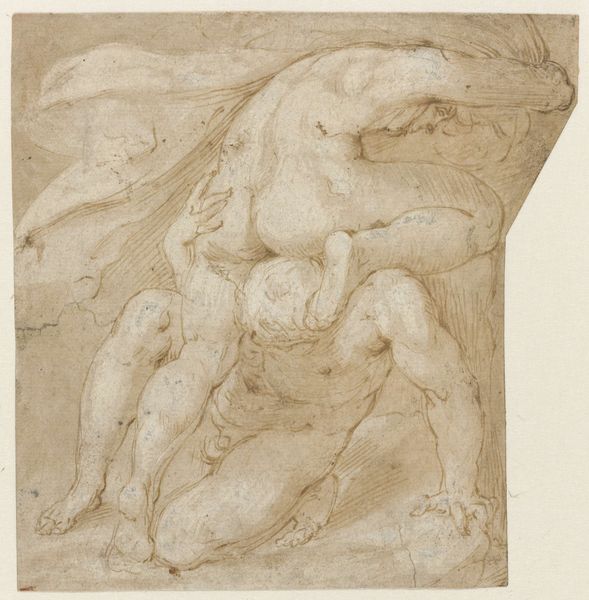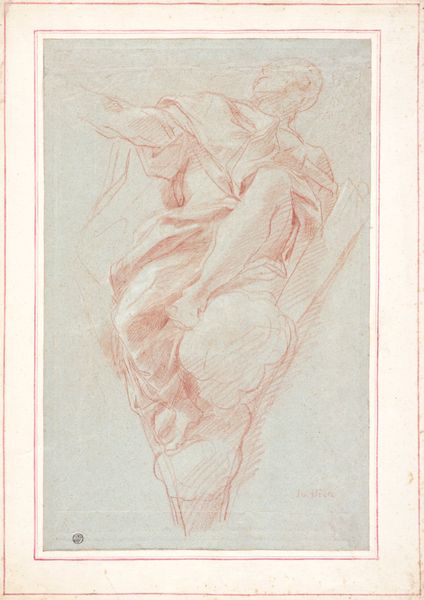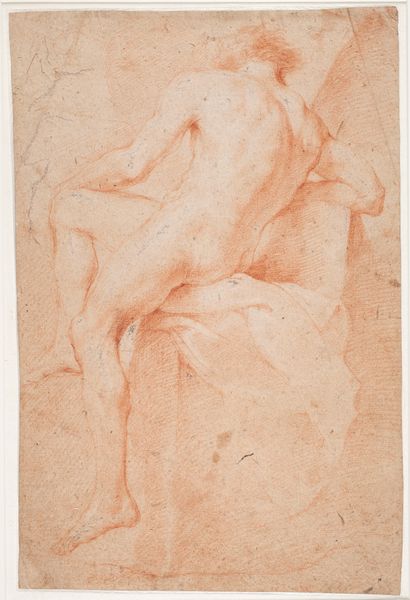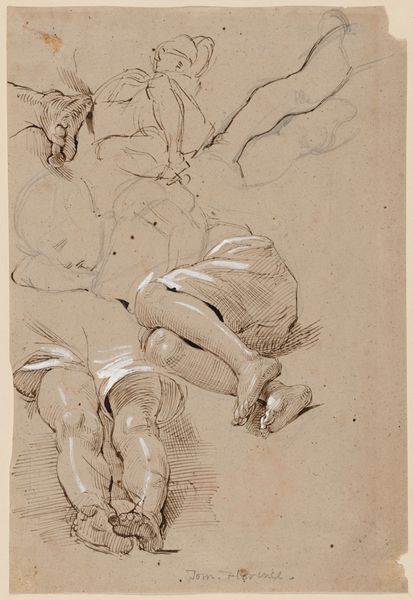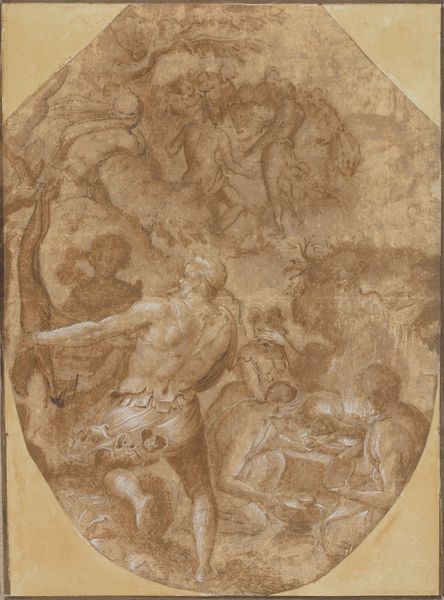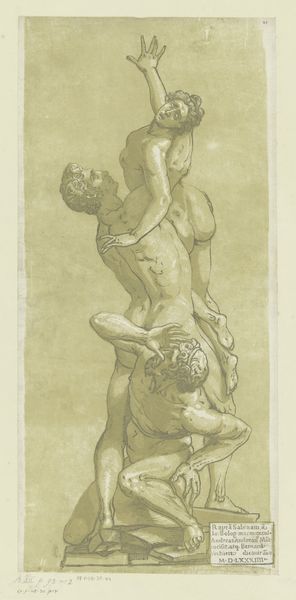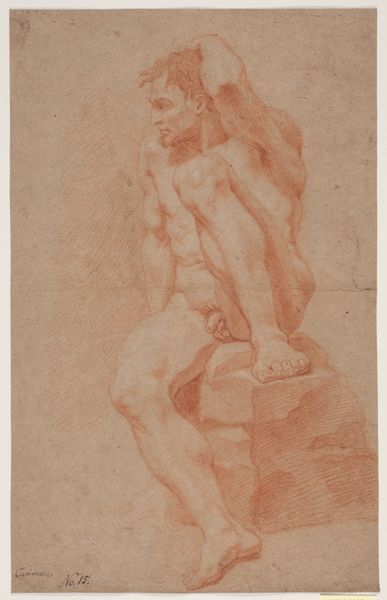
Laocoon. Front view of Laocoon and his younger son turmed to the left. 1628 - 1630
0:00
0:00
drawing, mixed-media, charcoal
#
portrait
#
drawing
#
mixed-media
#
baroque
#
charcoal drawing
#
figuration
#
charcoal
#
history-painting
#
charcoal
#
mixed media
Dimensions: 368 mm (height) x 245 mm (width) (bladmaal)
Willem Panneels created this drawing of Laocoon and his son with pen and brown ink in the 17th century. It depicts the tragic scene from Virgil’s Aeneid, where Laocoon, a Trojan priest, and his sons are attacked by sea serpents. Panneels likely made this drawing while working in Peter Paul Rubens's workshop in Antwerp. Here, he would have been exposed to classical sculpture. The Laocoon sculpture, rediscovered in Rome in 1506, was greatly admired by artists of the time for its dramatic depiction of human suffering. This drawing reflects the 17th-century artistic interest in antiquity but also hints at the social and political functions of art academies. Artists used classical works like Laocoon to train their eyes and hands, reinforcing a hierarchy of artistic styles that favored classical ideals. Understanding the image requires delving into the history of art academies and their role in shaping artistic tastes. Researching the rediscovery of the Laocoon sculpture and its impact on artists, for example, can shed light on the social conditions that shaped artistic production in 17th-century Europe.
Comments
No comments
Be the first to comment and join the conversation on the ultimate creative platform.

